|
 Secure Site
Secure Site
|
 |
Archive for the 'yoga' Category
 yoga wind pose Four days a week, Nancy Seitz unrolls her yoga mat for a 90-minute asana practice in the Sivananda Yoga tradition. But her “yoga” doesn’t end when Savasana does. By ardently embracing some of yoga’s devotional practices, Seitz—a 55-year-old editor in Manhattan—has developed a sweet sense of connection with the Divine that permeates her entire life.
Each morning she practices a 30-minute devotional mantra meditation. Before she leaves for work, she repeats a mantra for safe passage. She offers gratitude before each meal. She attends a weekly arati (light) ceremony at her local Sivananda center. At home she performs a puja ceremony at her altar—offering milk, rice, flowers, and water to Saraswati, the Hindu goddess of music, arts, and knowledge, as well as to other deities. She devotes her yoga practice to the spirit of the leader of the lineage she follows, the late Swami Sivananda.
“Bhakti just gives my practice a different dimension,” Seitz says. “It’s really hard in the day-to-day world to keep awareness and stay positive, and this awareness of the Divine helps.” Like other modern yogis, Seitz has found bhakti yoga, known as the yoga of devotion, to be a lifesaver as she navigates a hectic modern existence. The Sanskrit word bhakti comes from the root bhaj, which means “to adore or worship God.” Bhakti yoga has been called “love for love’s sake” and “union through love and devotion.” Bhakti yoga, like any other form of yoga, is a path to self-realization, to having an experience of oneness with everything.
“Bhakti is the yoga of a personal relationship with God,” says musician Jai Uttal, who learned the art of devotion from his guru, the late Neem Karoli Baba. At the heart of bhakti is surrender, says Uttal, who lives in California but travels the globe leading kirtans and chanting workshops.
Yoga scholar David Frawley agrees. In his new book, Yoga: The Greater Tradition, he writes that the ultimate expression of bhakti yoga is surrender to the Divine as one’s inner self. The path, he says, consists of concentrating one’s mind, emotions, and senses on the Divine.
 everyday ecstasy As American yoga matures, interest in bhakti yoga has exploded. The Esalen Institute in Big Sur, California, holds an annual bhakti festival, and Yoga Tree in San Francisco hosts the Bhakti Yoga Sunsplash, a celebration with music. Today’s Western yogis don’t necessarily practice devotion to a Hindu deity, a guru, or “God” as a patriarchal figure in white robes (although some do). Many Westerners who practice bhakti yoga tend to connect with a more encompassing idea of the Divine, the Beloved, the Spirit, the Self, or the Source. As Uttal says, “Everyone has their own idea or feeling of what ‘God’ is.”
“For me, bhakti means whatever strikes your heart with beauty, whatever hits the mark of your heart and inspires you to just feel the love,” says Sianna Sherman, a senior Anusara Yoga teacher.
As you tap into this universal love, you naturally develop a sense of trust that this benevolent, wise universe provides; you relax; and you can’t help but generate positive energy for others.
Frawley calls bhakti “the sweetest of the yoga approaches” and says it is often more accessible than other forms of yoga, which may explain its growing popularity. “At first, American yoga was just a fitness thing,” says Carlos Pomeda, a yoga scholar in Austin, Texas. “But more and more we are seeing people discover this whole other world of love and devotion.”
adapted from Yoga Journal by Nora Issacs
 gentle chime clock from Now & Zen
Now & Zen
1638 Pearl Street
Boulder, CO 80302
(800) 779-6383
Posted in yoga, Yoga Timers by Now & Zen
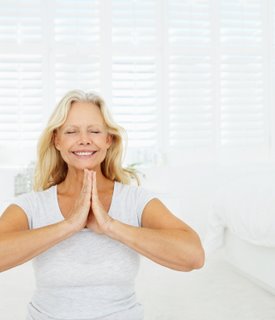 meditation lady having fun Plan a fun night with friends or book that workshop with a visiting yoga teacher—it may keep you healthy. Earlier this year researchers at Loma Linda University in California discovered that looking forward to an event boosts immunity. They compared the stress levels of two sets of students—one group was anticipating a positive experience; the other group was feeling neutral. Those in the first group had lower levels of stress hormones, including cortisol and epinephrine (adrenaline), which are known to weaken the immune system over time. “Our studies show that biological changes take place before and in anticipation of an event. Specifically, detrimental stress hormones decrease when you look forward to something you enjoy,” says Lee Berk, the study’s lead author. In 2001 the same researchers discovered that laughter increases immunity. What better excuse to invite some of your friends over to laugh out loud?
adapted from Yoga Journal by Catherine Gutherie
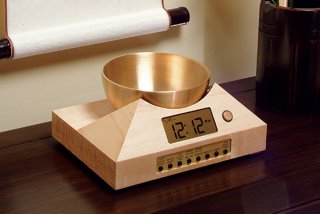 Tibetan Timer and Gentle Alarm Clock for Meditation Now & Zen
1638 Pearl Street
Boulder, CO 80302
(800) 779-6383
Posted in Well-being, yoga, Yoga Timer, Yoga Timers by Now & Zen
How to do it: Lying on the floor with both legs straight, hug one knee into your chest, drawing it in slowly and wrapping your arms around your shin. Breathe, exhaling with an “s” sound, for one to two minutes. Now flex the foot of your bent leg, hold it for 10 to 15 seconds, and release it back to a neutral position. Flex and release five times, then slowly lower the leg back down. Repeat on the other leg.
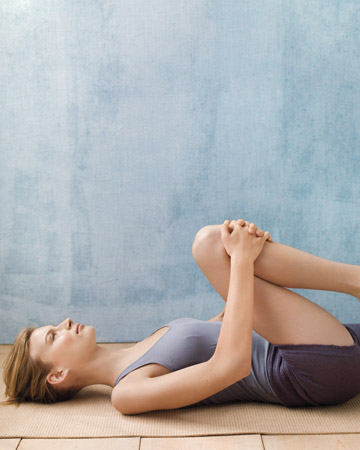 leg stretch What it does:
Opens the hips, relieves tension in the lower back, awakens the muscles in your ankles and feet, stretches the hamstrings.
adapted from Body + Soul Magazine
Use our unique “Zen Clock” which functions as a Yoga Timer. It features a long-resonating acoustic chime that brings your meditation or yoga session to a gradual close, preserving the environment of stillness while also acting as an effective time signal. Our Yoga Timer & Clock can be programmed to chime at the end of the meditation or yoga session or periodically throughout the session as a kind of sonic yantra. The beauty and functionality of the Zen Clock/Timer makes it a meditation tool that can actually help you “make time” for meditation in your life. Bring yourself back to balance.
 Zen Chime Alarm Clock and Timer Now & Zen – The Yoga Timer Store
1638 Pearl Street
Boulder, CO 80302
(800) 779-6383
Posted in Well-being, yoga, Yoga Timer, Yoga Timers by Now & Zen
 stretch out the stress What it does:
Opens the chest and sides of the torso, releases stiffness from the back and neck, tones core muscles and lengthens the spine, creates more space in the abdomen.
How to do it: Stand with feet shoulder-width apart and arms by your sides. Slowly reach your right arm out to the side and up over your head (left arm stays by your side). Keep the neck long and your right shoulder blade down and back. Now bend sideways to the left and hold for three breaths, making an “s” sound on the exhale. Return to vertical, reaching your right arm out to the side and back down. Repeat with the left arm. Now slowly reach both arms out to the sides and up over your head, again keeping your neck long and shoulder blades down and back. Reach your feet and legs down into the floor as your fingers and arms stretch up. Stay for five breaths, making an “s” sound on the exhale, and release.
adapted from Body + Soul Magazine
Use our unique “Zen Clock” which functions as a Yoga Timer. It features a long-resonating acoustic chime that brings your meditation or yoga session to a gradual close, preserving the environment of stillness while also acting as an effective time signal. Our Yoga Timer & Clock can be programmed to chime at the end of the meditation or yoga session or periodically throughout the session as a kind of sonic yantra. The beauty and functionality of the Zen Clock/Timer makes it a meditation tool that can actually help you “make time” for meditation in your life. Bring yourself back to balance.
 Gentle Wake Up Alarm Clocks with Chimes Now & Zen – The Yoga Timer Store
1638 Pearl Street
Boulder, CO 80302
(800) 779-6383
Posted in Well-being, yoga, Yoga Timer, Yoga Timers by Now & Zen
 Jaw and Neck Release Stretch The Stress Out
What it does: Releases tension from the jaw, neck, and shoulders; deepens breathing.
How to do it: Sit tall in a chair. Inhale deply; as you exhale, make a “ha” sound, gradually opening your mouth as far as you can without straining your jaw muscles. Let gravity do most of the work. Close your mouth as you inhale and repeat eight to 10 times, opening your mouth wider while using less muscular effort each time.
Now focus on the neck. Still sitting tall, drop your chin toward your chest and take several breaths. Then tilt your head back and look up at the ceiling for several breaths. Bring your head back to the center, inhale, and then turn and look to the right as you exhale. Pause for an inhale, then exhale as you slowly rotate your head to look left. Inhale, then exhale as you rotate your head to the right. Continue until you’ve looked right and left five times each.
adapted from Body + Soul
Use our unique “Zen Clock” which functions as a Yoga Timer. It features a long-resonating acoustic chime that brings your meditation or yoga session to a gradual close, preserving the environment of stillness while also acting as an effective time signal. Our Yoga Timer & Clock can be programmed to chime at the end of the meditation or yoga session or periodically throughout the session as a kind of sonic yantra. The beauty and functionality of the Zen Clock/Timer makes it a meditation tool that can actually help you “make time” for meditation in your life. Bring yourself back to balance.
 Yoga timers from Boulder, Colorado
Now & Zen – The Yoga Timer Store
1638 Pearl Street
Boulder, CO 80302
(800) 779-6383
Posted in Well-being, yoga, Yoga Timer, Yoga Timers by Now & Zen, Zen Timers
 yoga stretch What it does:
Stretches the chest and upper-back muscles, improves posture.
How to do it: Sit tall in a chair. Bend elbows and interlace your hands behind your head. Tilt your head back slightly and let the weight of your head rest in your hands. Lift your spine and chest up toward the ceiling. If it’s comfortable, arch the uppermost portion of your spine slightly back, but keep your focus on lifting up the chest. Stay for up to one minute, breathing deeply and exhaling with an “s” sound.
adapted from Body + Soul Magazine
Use our unique “Zen Clock” which functions as a Yoga Timer. It features a long-resonating acoustic chime that brings your meditation or yoga session to a gradual close, preserving the environment of stillness while also acting as an effective time signal. Our Yoga Timer & Clock can be programmed to chime at the end of the meditation or yoga session or periodically throughout the session as a kind of sonic yantra. The beauty and functionality of the Zen Clock/Timer makes it a meditation tool that can actually help you “make time” for meditation in your life. Bring yourself back to balance.
 Yoga timers and gentle wake up clocks with chimes Now & Zen – The Yoga Timer Store
1638 Pearl Street
Boulder, CO 80302
(800) 779-6383
Posted in Bamboo Chime Clocks, mindfulness practice, Well-being, yoga, Yoga Timer, Yoga Timers by Now & Zen
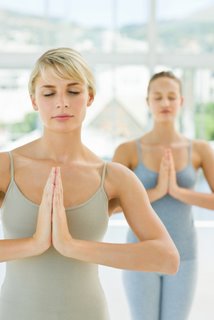 yoga Unless you’re a professional athlete, chances are you’re not getting a balanced workout during your workday. Whether you’re slaving away at a desk, making rounds, or waiting tables, you’re likely straining some muscles while ignoring others, leaving your body feeling stiff, sore, and physically exhausted. Deadlines and pressure from bosses don’t help matters, either.
“When you get stressed, you often hold your breath, which leads to holding your muscles. It feels like you’re wearing a straitjacket,” explains Elaine Petrone, a stress- and pain-management expert and creator of the “Stop the Back Pain” DVD.
You can stretch out the stress, though, with a little time and effort. “By pairing mindful stretches with deep breathing, you’ll make lasting, positive changes to the way your body works, looks, and feels,” says Petrone, who helped us develop this rejuvenating routine. Done for 15 to 20 minutes, three times a week, it paves the way to a calmer, less achy, and more energized you.
adapted from Body + Soul Magazine
Use our unique “Zen Clock” which functions as a Yoga Timer. It features a long-resonating acoustic chime that brings your meditation or yoga session to a gradual close, preserving the environment of stillness while also acting as an effective time signal. Our Yoga Timer & Clock can be programmed to chime at the end of the meditation or yoga session or periodically throughout the session as a kind of sonic yantra. The beauty and functionality of the Zen Clock/Timer makes it a meditation tool that can actually help you “make time” for meditation in your life. Bring yourself back to balance.
 Zen Alarm Clocks and Yoga Timers with Gentle Chime Now & Zen – The Yoga Timer Store
1638 Pearl Street
Boulder, CO 80302
(800) 779-6383
Posted in Bamboo Chime Clocks, Well-being, yoga, Yoga Timer, Yoga Timers by Now & Zen, Zen Timers
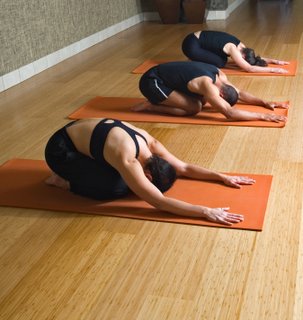 How to avoid yoga injuries “While yoga can certainly help you recover from injury, like any physical activity, it can also lead to one if you’re not careful. According to the U.S. Consumer Product Safety Commission, there were an estimated 5,000 reported injuries due to yoga practice in 2005. “Distinguishing pain from a really good stretch takes a little practice,” explains Baxter Bell, M.D., a Petaluma, California-based yoga teacher, physician, and medical acupuncturist. He offers these tips to reduce your risk of getting hurt.
1. Talk to your teacher before class. Your instructor can help you modify your poses to accommodate an injury, but only if he or she knows you have one. If your instructor doesn’t have good advice on how to approach your special need, consider looking for another instructor.
2. Don’t exceed your limits. Beginning students, especially, tend to push a little too hard.
3. Pay attention to hot spots. The knees, lower back, sacrum, wrists, and shoulders — observe all of these areas as you practice.
4. Use props. In a pose like Triangle, a block can help you come out of the depth of the pose.
5. Talk to your teacher after class. If something hurts as a result of your practice, let your teacher know so that the next class will be better.
6. Take post-practice care. Ice any sore spots or consider taking a natural anti-inflammatory.
adapted from Body + Soul, October 2007
Use our unique “Zen Clock” which functions as a Yoga Timer. It features a long-resonating acoustic chime that brings your meditation or yoga session to a gradual close, preserving the environment of stillness while also acting as an effective time signal. Our Yoga Timer & Clock can be programmed to chime at the end of the meditation or yoga session or periodically throughout the session as a kind of sonic yantra. The beauty and functionality of the Zen Clock/Timer makes it a meditation tool that can actually help you “make time” for meditation in your life. Bring yourself back to balance.
 Bamboo Yoga Timer for Yoga Now & Zen – The Yoga Timer Store
1638 Pearl Street
Boulder, CO 80302
(800) 779-6383
Posted in yoga
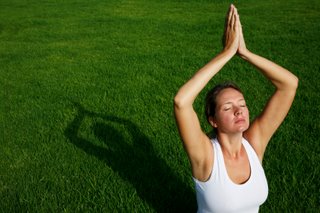 Outdoor Yoga That most familiar of asana sequences, Surya Namaskar (Sun Salutation) is as rich in symbolic and mythic overtones as it is in physical benefits.
In many cultures, light has long been a symbol of consciousness and self-illumination. “The world begins with the coming of light,” wrote Jungian analyst Erich Neumann in The Origins and History of Consciousness (Princeton University Press, 1995). “Opposition between light and darkness has informed the spiritual world of all peoples and molded it into shape.”
Our primary source of light is, of course, the sun. When we look at our closest star, we may see nothing more than a big yellow ball. But for thousands of years, the Hindus have revered the sun, which they call Surya, as both the physical and spiritual heart of our world and the creator of all life itself. That’s why one of Surya’s many other appellations is Savitri (the Vivifier), who, according to the Rig Veda, “begets and feeds mankind in various manners” (III.55.19). Moreover, since everything that exists originates from the sun, as Alain DaniŽlou wrote in The Myths and Gods of India (Inner Traditions, 1991), it “must contain the potentiality of all that is to be known.” For the Hindus, the sun is the “eye of the world” (loka chakshus), seeing and uniting all selves in itself, an image of and a pathway to the divine.
One of the means of honoring the sun is through the dynamic asana sequence Surya Namaskar (better known as Sun Salutation). The Sanskrit word namaskar stems from namas, which means “to bow to” or “to adore.” (The familiar phrase we use to close our yoga classes, namaste—te means “you”—also comes from this root.) Each Sun Salutation begins and ends with the joined-hands mudra (gesture) touched to the heart. This placement is no accident; only the heart can know the truth.
The ancient yogis taught that each of us replicates the world at large, embodying “rivers, seas, mountains, fields…stars and planets…the sun and moon” (Shiva Samhita, II.1-3). The outer sun, they asserted, is in reality a token of our own “inner sun,” which corresponds to our subtle, or spiritual, heart. Here is the seat of consciousness and higher wisdom (jnana) and, in some traditions, the domicile of the embodied self (jivatman).
It might seem strange to us that the yogis place the seat of wisdom in the heart, which we typically associate with our emotions, and not the brain. But in yoga, the brain is actually symbolized by the moon, which reflects the sun’s light but generates none of its own. This kind of knowledge is worthwhile for dealing with mundane affairs, and is even necessary to a certain extent for the lower stages of spiritual practice. But in the end, the brain is inherently limited in what it can know and is prone to what Patanjali calls misconception (viparyaya) or false knowledge of the self.
The eight basic postures, in order of performance, are Tadasana (Mountain Pose), Urdhva Hastasana (Upward Salute), Uttanasana (Standing Forward Bend), Lunge, Plank Pose, Chaturanga Dandasana (Four-Limbed Staff Pose), Urdhva Mukha Svanasana (Upward-Facing Dog Pose), and Adho Mukha Svanasana (Downward-Facing Dog Pose).
The transition from posture to posture is facilitated by either an inhalation or an exhalation. As you move through the sequence, watch your breath closely. Slow your pace or stop and rest entirely if your breathing becomes labored or shuts down altogether. Always breathe through your nose, not your mouth: Nasal breathing filters and warms incoming air and slows your breathing down, thereby lending the sequence a meditative quality and reducing the risk of hyperventilation.
To perform the sequence, start in Tadasana, with your hands together at your heart. Inhale and lift your arms overhead to Urdhva Hastasana, then exhale while lowering the arms down and fold your torso into Uttanasana. Then inhale, arch your torso into a slight backbend with the fingertips or palms pressed to the floor or blocks, and exhale while bringing your left foot back into a lunge. Inhale forward to Plank, then exhale and lower yourself into Chaturanga Dandasana. On an inhalation, arch your torso up as you straighten your arms into Upward Dog. Exhale back to Downward Dog; step the left foot forward on an inhalation into Lunge. Swing the right leg forward to Uttanasana on an exhalation, then lift your torso and reach your arms overhead on an inhalation to Urdhva Hastasana. Finally, lower your arms on an exhalation and return to your starting point, Tadasana.
Remember, this is only a half-round; you’ll need to repeat the sequence, switching left to right and right to left to complete a full round. If you’re just starting out, it might help to work on the poses individually before you put them together. (Visit www.YogaJournal.com for more how-to information.)
adapted from Yoga Journal, by Richard Rosen
Use our unique “Zen Clock” which functions as a Yoga Timer. It features a long-resonating acoustic chime that brings your meditation or yoga session to a gradual close, preserving the environment of stillness while also acting as an effective time signal. Our Yoga Timer & Clock can be programmed to chime at the end of the meditation or yoga session or periodically throughout the session as a kind of sonic yantra. The beauty and functionality of the Zen Clock/Timer makes it a meditation tool that can actually help you “make time” for meditation in your life. Bring yourself back to balance.
 Yoga timers from Boulder, Colorado Now & Zen – The Yoga Timer Store
1638 Pearl Street
Boulder, CO 80302
(800) 779-6383
Posted in intention, Now & Zen Alarm Clocks, wake up alarm clock, Well-being, yoga, Yoga Timer, Yoga Timers by Now & Zen
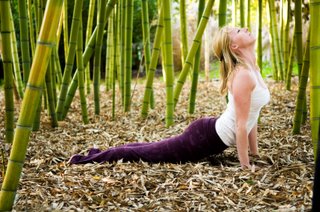 better posture from yoga Your mom was right: You’ll look better and feel great if you stop slouching and stand up straight. Yoga can help you do just that—in a way that honors your spine’s natural curves. Here’s a guide to assessing and improving your posture.
Are you a slumper? A swayer? Chances are you’re one or the other to some degree—despite Mom’s best efforts all those years ago to get you to sit up straight and stop slouching. She probably told you that you’d look and feel better if you worked on your posture, and she was absolutely right. But if you’re like most people, you rolled your eyes and ignored her, or straightened up until she wasn’t looking. And you probably didn’t give posture much more thought at all until you walked into your first yoga class and tried to stand in Tadasana (Mountain Pose).
When you’re a beginner, it’s surprisingly complicated to master the art of rooting down through the feet while lengthening up through the spine, keeping your chest open without jutting your lower ribs out, and keeping the legs muscles strong and lifted without tensing the belly or jaw. But ultimately, Tadasana demands just one simple thing: that you stand in a way that supports the natural curves of a healthy spine. So why is it so difficult? And why do we work so hard to master good posture in yoga—leaving class feeling taller and healthier—only to slump down in the car seat on the way home or revert to a swayback when we heft our overstuffed yoga bags onto our backs?
In short, modern life conspires against good posture. We spend our days sitting at desks, staring at computer screens. When we travel, we do it in cars or—worse—airplanes. We lounge around in overstuffed chairs designed more for looks than for lumbar support. And we pay people to mow our lawns, tend our gardens, and remove our trash so we can spend more time working or driving or sitting. Nonsedentary cultures—with a few exceptions—don’t have the same epidemic of back and neck problems that we do. Picture a woman gracefully balancing a large basket of food on her head. To carry such a heavy weight, she must have a perfectly aligned spine and strong posture-support muscles. You don’t get that kind of alignment and strength from sitting around and watching the tube. You can, however, get it from a regular yoga practice.
Take comfort in knowing that yoga trains your mind as well as your body. As you continue to devote yourself to your practice, you will become more present in your body and more aware of your alignment, and you will begin to naturally make choices that will improve your health and your quality of life. Over time, the combination of increased awareness and physical training will allow your improved alignment to spill out into other areas of your life. Before you know it, you’ll feel at ease as you practice good yoga alignment while you’re perched at your desk, standing at the copier, and sitting at dinner. You’ll be doing yoga during all of your waking hours. And who knows? You might just impress your mom!
adapted fromYoga Journal, by Julie Gudmestad
Use our unique “Zen Clock” which functions as a Yoga Timer. It features a long-resonating acoustic chime that brings your meditation or yoga session to a gradual close, preserving the environment of stillness while also acting as an effective time signal. Our Yoga Timer & Clock can be programmed to chime at the end of the meditation or yoga session or periodically throughout the session as a kind of sonic yantra. The beauty and functionality of the Zen Clock/Timer makes it a meditation tool that can actually help you “make time” for meditation in your life. Bring yourself back to balance.
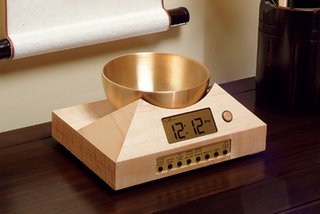 Zen Timepiece, a yoga timer and clock with Tibetan bowl Now & Zen – The Yoga & Meditation Timer Store
1638 Pearl Street
Boulder, CO 80302
(800) 779-6383
Posted in intention, Well-being, yoga, Yoga Timer, Yoga Timers by Now & Zen, Zen Timers
« Previous Page — « Previous Entries
Next Entries » — Next Page »
|
|
|
|